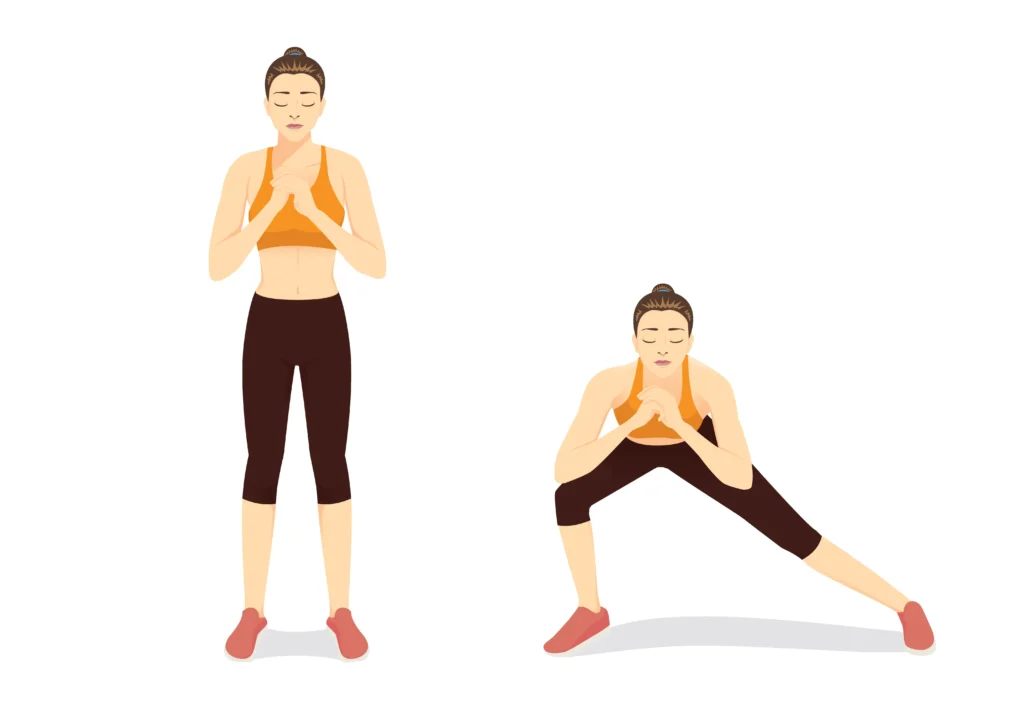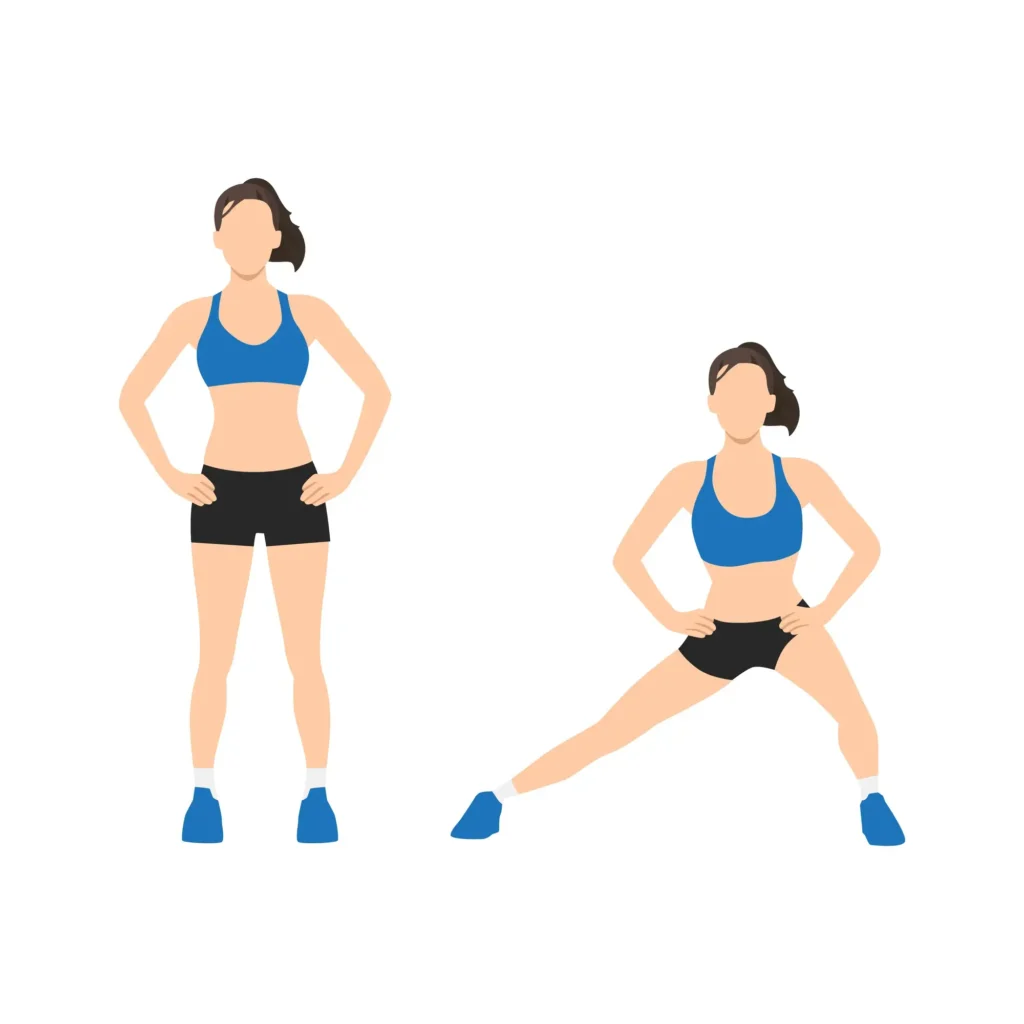When it comes to physical health, knowing the importance of your gluteal muscles is crucial, regardless of whether you’re a regular at the gym, an enthusiastic cyclist, or a committed runner. Your glutes, which include the gluteus maximus, medius, and minimus, are the primary muscles involved in many lower body motions necessary for daily tasks. Although the gluteus maximus receives the most attention due to its size and strength among the three, undervaluing the other two muscles might result in functional compromise and imbalances. This article delves into the gluteus minimus exercises, a frequently disregarded muscle, and examines its vital function in hip abduction and balance. Despite its small size, the gluteus minimus is essential for preserving the general power and efficiency of the lower body.
Through knowledge of its purpose and use of specific gluteus minimus exercises, people could ensure a comprehensive approach to gluteal muscle growth, resulting in increased function, less chance of injury, and better overall physical health.
Taking apart Your Glutes:
- Gluteus Maximus: The gluteus maximus is primarily responsible for hip extension or bringing your leg back behind your torso. This muscle, which makes up most of your buttocks, gets active during squats, leaps, runs, and stair climbing.
- Gluteus Medius: Leg extension to the side results in hip abduction. It is started by the gluteus medius, a slightly smaller muscle than the gluteus maximus. Hip stability depends on the medius gluteus, a muscle in the buttock’s top part. If this muscle is strong, your pelvis should stay somewhat level as you run or stroll.
- The Gluteus Minimus: The smallest muscle in the trio, the gluteus minimus, works with the gluteus medius muscle to abduct your leg at the hip. (Specifically, it is located at the hip joint.)
The Advantages of gluteus minimus exercises:
Although the gluteus maximus is smaller than the other two gluteal muscles, it provides several essential advantages for total physical health and function.
- First, activating the gluteus maximus greatly enhances hip strength and stability. A strong gluteus maximus, the main muscle involved in hip extension, reduces the incidence of hip-related problems and improves overall performance by providing crucial support during gluteus minimus exercises like squatting, lifting, and jumping.
- Plus, gluteus maximus workouts help you feel more balanced. This muscle is critical in supporting the pelvis and is essential for maintaining equilibrium while engaging in various activities, such as walking, jogging, and performing dynamic motions. Better balance not only lowers the chance of accidents and falls but also improves performance in various sports.
- A robust and well-functioning gluteus maximus is essential to a balanced gait. This muscle promotes optimal propulsion while walking and running by maximizing hip extension, which leads to a more fluid and smooth gait. Consequently, it lessens the strain on the muscles and joints of the lower body, increasing longevity and preventing injuries.
- Additionally, consistent gluteus maximus training helps prevent injuries by improving general lower body biomechanics. Hip impingement, lower back discomfort, and knee problems are typical injuries that people can reduce their risk of by developing the muscles involved in hip stability and mobility, such as the gluteus maximus.
What Is the Process of Gluteus Minimus Activation?
You may engage your gluteus minimus by performing hip abduction workouts, which include extending your leg sideways. Put your palm directly behind your hip-socket joint, on the side of your butt, to experience what it feels like to contract this muscle. Assume a side-prone position and extend your upper leg upwards. The gluteus minimus is activated by lifting from the glutes rather than the inner thighs. As you lift your leg, feel the muscle contract. You can stimulate your gluteus minimus during exercise by using cues that improve the relationship between your brain and this muscle.
5 gluteus minimus exercises:
Numerous exercises for gluteus minimus strengthen your medius and benefit your gluteus minimus. These two gluteal muscles collectively build up your hips and pelvis while facilitating and regulating hip abduction. We break out five moves; you can try them below.
Leg Lifting on the Side:


This basic workout improves your pelvic floor, core, gluteus minimus, and medius. If you’re a beginner, start with just your body weight. Later, you may opt to add ankle weights.
- Assume a lateral position for your body. Maintain a straight posture and put your legs atop one another. Raise your head with one arm if you’d like.
- Raise your left leg in the air. Leg straightening is advised. Reposition it slowly.
- Do 15 to 20 reps. Turn over a new side.
Fire Hydrants:


This exercise tones the shoulders and deep core muscles while developing your gluteus medius and minimus. Ankle weights are an alternative option for this exercise.
- Begin on your hands and knees in the table top posture. Remain flat on your back and your core taut.
- To keep your pelvis stable, contract your core.
- Raise your right leg to the side while maintaining an arched right knee. When your knee and hip are in alignment, stop. Take a two- to three-second break.
- Go back to where you were before.
- Do 15 repetitions on each side.
Clamshells:


- Place your knees on each other while lying on your left side. Your legs should form a 90-degree angle.
- Lift your right knee toward the ceiling while keeping your feet close. Rotate your upper hip to open your hips and groin.
- Lower the leg back down gradually.
- Perform ten to fifteen reps. Repeat on the other side.
Side Steps:


To finish this gluteus minimus workout, use a tiny loop elastic band. Keep the band tight and move as slowly as you can.
- Maintain proper posture and stand erect. Put a little loop of resistance material around the ankles and put your hands on your hips.
- Maintain your glutes and core active. Keep your back straight while you raise your chest. With your right foot, take a large step toward the right. You can either keep your knees straight or slightly bend them.
- Make sure there is sufficient space between your feet so the band is firm when you step your left foot toward your right.
- Proceed to the right by 20 to 30 steps. Return by using your left leg as a leader and logging 20 to 30 steps.
Lateral Lunges:


It is one of the best gluteus minimus exercises, strengthening your gluteus minimus while toning your inner thighs, quadriceps, and core muscles.
- Keep your hands by your sides and adopt a nice stance. To progress this exercise, hold a dumbbell at your shoulder.
- As you step out to the side, bend the knee on the opposite side and transfer your weight to the right leg. Maintain an upright left knee and forward-pointing toes.
- To return to the beginning position, push through your right foot and contract your glutes after your right knee is bent to at least a 90-degree angle.
- Perform 15 sets. Repeat by flipping sides.
Wrapping up
Although the gluteus maximus is frequently the focus of lower body exercises, the gluteus minimus should also not be ignored. The gluteus minimus, the smallest of the three, is important for hip abduction and balance. Increasing the strength of this muscle helps prevent injuries, improves lower body efficiency generally, and helps with balance and posture. Targeted activities that build and use the gluteus minimus can help you develop a stronger, lower body. These gluteus minimus exercises include side leg lifts, fire hydrants, clamshells, side steps, and lateral lunges. Focusing on the three gluteal muscles can improve fitness and lower the chance of abnormalities or injuries. This promotes a more functioning and healthy body.


Leave a Reply